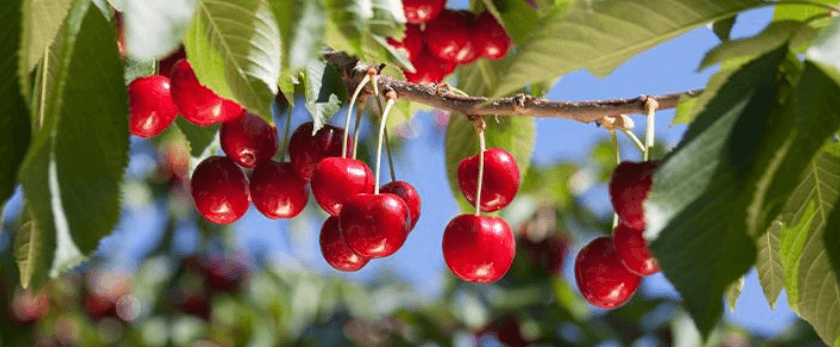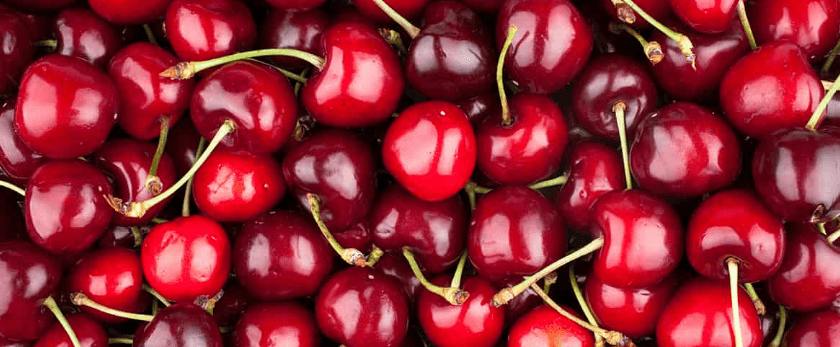Are you tired of buying expensive and often chemically-treated cherries from the grocery store? Why not try growing your own cherries at home? Not only will you have access to fresh, organic fruit, but you'll also be reducing your carbon footprint and contributing to a more sustainable future. In this article, we'll guide you through the process of growing cherries, from choosing the right variety to caring for your trees and troubleshooting common problems.
Choosing the Right Variety
Before you start growing cherries, it's important to choose the right variety for your climate and growing conditions. Some popular cherry varieties include Bing, Rainier, and Montmorency. Bing cherries are sweet and juicy, while Rainier cherries have a milder flavor and a yellow-red color. Montmorency cherries are tart and often used for baking and making preserves.
When selecting a variety, consider the climate in your area. Sweet cherries thrive in warmer climates, while tart cherries can tolerate colder temperatures. You should also consider the size of your space and the type of soil you have. Some cherry trees can grow up to 30 feet tall, so make sure you have enough room for your chosen variety.
Planting Your Cherry Tree
Cherry trees can be planted in the spring or fall, but the best time to plant is in the fall when the soil is still warm. This allows the roots to establish before the tree goes dormant in the winter. When planting your cherry tree, make sure to choose a sunny spot with well-draining soil. Cherry trees prefer slightly acidic soil with a pH of 6.0-6.5.
Dig a hole that is twice as wide and deep as the root ball of your tree. Gently loosen the roots and place the tree in the hole, making sure the graft union (where the rootstock and scion are joined) is above the soil line. Fill the hole with soil and water thoroughly. Mulch around the base of the tree to retain moisture and suppress weeds.

Caring for Your Cherry Tree
Watering
Cherry trees need regular watering, especially during the first few years of growth. Water deeply once a week, making sure the soil is moist but not waterlogged. In hot and dry climates, you may need to water more frequently. As the tree matures, you can reduce the frequency of watering, but make sure to water deeply when you do.
Light
Cherry trees need full sun to thrive, so make sure to plant them in a spot that receives at least 6-8 hours of sunlight per day. If your area experiences hot summers, consider planting your tree in a spot that receives some afternoon shade to protect it from scorching.
Soil
Cherry trees prefer well-draining soil with a pH of 6.0-6.5. If your soil is too alkaline, you can lower the pH by adding sulfur or peat moss. If your soil is too acidic, you can raise the pH by adding lime. It's important to test your soil before planting to ensure it has the right pH for your cherry tree.
Fertilizer
Cherry trees don't require a lot of fertilizer, but a balanced fertilizer can help promote healthy growth and fruit production. Fertilize your tree in the spring before new growth appears, and again in the fall after harvest. Avoid fertilizing in the summer, as this can promote late-season growth that may not have time to harden off before winter.
Pruning
Pruning is essential for maintaining the health and productivity of your cherry tree. Prune your tree in the late winter or early spring while it is still dormant. Remove any dead, damaged, or diseased branches, as well as any branches that are crossing or rubbing against each other. This will improve air circulation and prevent the spread of diseases.
Harvesting Your Cherries
Most cherry trees will start producing fruit in their third or fourth year. The exact time of harvest will depend on the variety you have chosen. Sweet cherries are usually ready to harvest in late spring or early summer, while tart cherries are ready in mid to late summer.
To harvest your cherries, gently twist the stem and pull the fruit off the tree. Avoid pulling the fruit off the tree, as this can damage the branches. Cherries are best eaten fresh, but they can also be frozen, canned, or made into jams and preserves.
Common Problems with Cherry Trees
Like any plant, cherry trees can face some challenges. Here are some common problems you may encounter and how to address them:
- Birds: Birds love cherries as much as we do, and they can quickly decimate a crop. To protect your cherries, cover the tree with netting or use scare tactics like reflective tape or fake predators.
- Pests: Cherry trees can be susceptible to pests like aphids, mites, and borers. Regularly inspect your tree for signs of infestation and treat with organic methods if necessary.
- Diseases: Cherry trees can also be affected by diseases like brown rot, leaf spot, and powdery mildew. Proper pruning and good air circulation can help prevent these diseases. If your tree does become infected, remove and destroy any affected branches or fruit.
- Fruit cracking: Heavy rain or fluctuations in watering can cause cherries to crack. To prevent this, make sure to water consistently and mulch around the base of the tree to retain moisture.
Responsible Disposal of Cherry Trees
When it's time to remove your cherry tree, it's important to dispose of it responsibly. Burning or dumping the tree can introduce diseases and pests to other plants and harm the environment. Instead, consider composting the tree or contacting your local waste management facility for proper disposal methods.
Conclusion
Growing your own cherries is a rewarding and sustainable way to enjoy this delicious fruit. By choosing the right variety, caring for your tree, and addressing any problems that may arise, you can have a bountiful harvest of fresh, organic cherries. Remember to dispose of your tree responsibly and enjoy the fruits of your labor!










